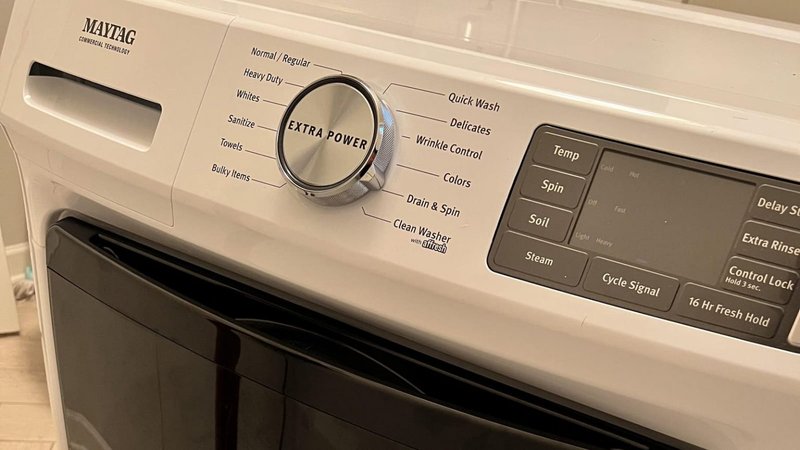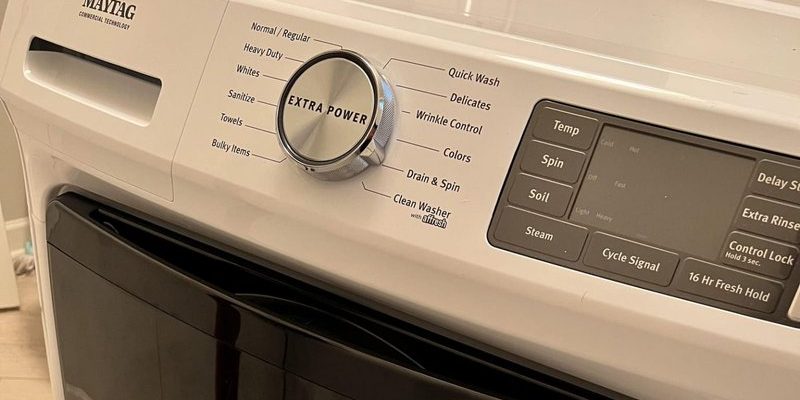
Washing machines, like Maytag’s diverse lineup, are marvels of modern technology. They’re designed to make our lives easier by handling the dirty work (literally). But, they’re not immune to hiccups and glitches. Think of the “E1” error code as a cryptic message from your washer – a bit like your car’s check engine light. It doesn’t tell you exactly what’s wrong, but it points you in the right direction. In most cases, an “E1” code is related to issues with water flow, whether it’s not filling up or draining properly. The good news is, with a little guidance, you can often fix these hiccups on your own.
Understanding the Water Inlet Valve
At the core of many “E1” error code issues is the water inlet valve. Picture this as the machine’s gatekeeper, controlling the flow of water into the washer. When functioning correctly, it opens to allow water in when needed and closes to stop the flow when the machine has enough. If there’s a problem, maybe due to blockages or a mechanical failure, the washer can’t get the right amount of water, triggering the “E1” code.
Imagine trying to fill a cup of water with a straw that’s plugged or squeezed shut. It’s frustrating, right? The water might trickle in, but it’ll never fill up the way you need it to. This is similar to what happens inside your washing machine when the inlet valve isn’t cooperating. You might see an “E1” code if there’s inadequate water flow because the machine’s sensors notice the problem and send you a signal.
To address this, it’s important to first check the water supply lines. Ensure they’re not kinked or blocked, preventing water from reaching the machine. Sometimes, the issue might be as simple as a partially closed faucet, so start by making sure everything is turned on properly. If the lines are clear and the faucet is open, but the problem persists, the inlet valve itself might need cleaning or replacement. Consulting your washer’s manual can provide handy tips for accessing and cleaning the valve – or when in doubt, reaching out to a professional for repair could save both time and stress.
Examining the Drainage System
Another common culprit behind the “E1” error is issues with the drainage system. If your washer can’t properly expel water, you’ll likely run into this code. The drainage system is essentially the machine’s way of ensuring that once your clothes are washed, the dirty water is efficiently removed. If water doesn’t drain properly, it can’t proceed to the next cycle – hence the alert.
Imagine trying to empty a bathtub with the drain clogged up. No matter how much you want the water gone, it’s just going to sit there until you address the blockage. Similarly, a washer with a drainage problem is stuck until the issue is resolved. The first thing to do is to check the drain hose for any obstructions. It should be free of kinks and ideally elevated to allow gravity to aid in the water’s exit. Debris or leftover soap scum can sometimes clog hoses, so a quick inspection can catch these nuisances.
If the hose isn’t the problem, the issue might be with the pump itself. The pump is like the engine behind the drainage system, pushing out the water efficiently. Sometimes, small items like socks or coins can slip through and cause a jam, keeping the pump from working its magic. In this case, it might require a more hands-on approach to remove any blockages. Again, referring to your machine’s manual for guidance on accessing the pump can be really helpful.
Checking the Electronic Components
Lastly, let’s not forget the role of electronic components in the whole laundry process. Your Maytag machine is packed with various sensors and circuit boards that work together to ensure everything operates smoothly. An “E1” code might sometimes pop up due to a glitch or failure in the electronic system, though it’s less common compared to water-related issues.
Think of these electronics as your washer’s brain – processing signals and commands. If there’s an error in the communication lines, the machine can get confused, resulting in an error code. Sometimes, simply turning off the machine, unplugging it, and then plugging it back in after a few minutes can reset the electronics, clearing minor glitches. It’s the equivalent of rebooting your computer when it throws up an error message that doesn’t seem to make sense.
If the error persists, there could be a more significant issue with the control board or the sensors. This can be a bit more complex for a DIY approach, so unless you’re comfortable working with electronics, calling in a professional might be your best bet. Not only can they diagnose the problem accurately, but they can also repair or replace any faulty components, saving you from potential headaches down the road.
In conclusion, while the “E1” error on your Maytag washing machine can initially feel daunting, it’s often a signal of manageable issues. By focusing on the water inlet valve, drainage system, and electronic components, you have a roadmap to tackle the problem head-on. Regular maintenance, like checking hoses and cleaning filters, can help prevent future occurrences, keeping your machine running smoothly. Remember, understanding what your machine is trying to tell you is half the battle. The rest just takes a bit of troubleshooting and the willingness to dive in and solve the problem!
